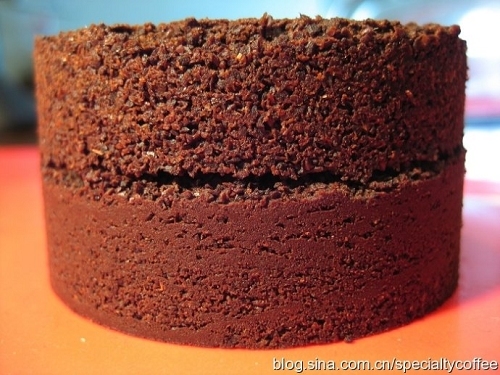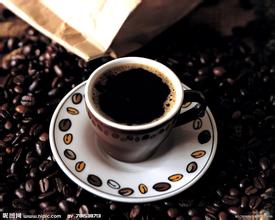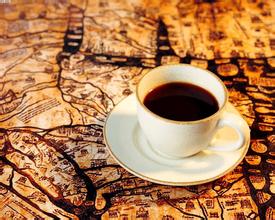Philharmonic pressed for 30 seconds to easily flush out a cup of coffee.
"Philharmonic pressure" is easy to use, put coffee particles in the pressure bucket, soak in water for 10 seconds, gently and slowly press the pressure bar in 20 seconds, a total of only 30 seconds, a cup of delicate, rich, supple, delicious coffee will be made. Use "Philharmonic pressure" to make coffee cake residue after making coffee:

"AeroPress" is a new coffee-making appliance launched by AEROBIE in 2006. Its inventor, Alan Adler, is a lecturer in mechanical engineering at Stanford University in the United States. It has more than 40 patents in the United States and other countries. "Philharmonic pressure" is easy to use, put coffee particles in the pressure bucket, soak in water for 10 seconds, gently and slowly press the pressure bar in 20 seconds, a total of only 30 seconds, a cup of delicate, rich, supple, delicious coffee will be made.
"Philharmonic pressure" outer packaging:

Unlike the drip filter coffee machine, although the soaking time is very short, it can fully soak the coffee particles and exert soothing and gentle pressure during extraction. It draws lessons from the pressure bar principle of the French press, but the coffee liquid is pressed out from the bottom of the apparatus through the filter paper, and the coffee particles are finer than those required by the French press, and the contact time between coffee and water is shorter but the pressure is higher, thus ensuring that the coffee drink is almost free of coffee powder. It uses the extraction method of an Italian espresso machine, but a layer of filter paper is added to the powder bowl, resulting in lower water temperature and lower pressure, resulting in a simpler structure and a much lower cost. but the extracted coffee tastes richer and softer without bitterness. Kenny Kenneth Davids, a famous American coffee reviewer and author of several coffee monographs, commented on "Philharmonic pressure": "if used correctly, Philharmonic pressure can make espresso and American coffee with a pure sense of export, but its price is only 20 or 1/30 of that of many household coffee machines." Eight reviewers from LOCALS ONLY COFFEE, a company in Washington State, where the coffee industry is well developed in the United States, gave the highest "five-star" rating after trial.
The state of "Philharmonic pressure" when extracting coffee:

All the components of "Philharmonic pressure" are as follows:

"Philharmonic pressure" has held three international competitions abroad. The following picture is a foreign version of "Philharmonic pressure" in different colors.

Photo Source: shotzombies.com
In use, we will find:
The soaking time required by "Philharmonic pressure" is only 10 seconds, but it can be fully soaked, thus ensuring that the coffee can be extracted quickly and have a stronger flavor.
"Philharmonic pressure" requires a lower water temperature of-80 degrees, so that it can extract a more supple taste.
The extraction time of "Philharmonic pressure" is only 20 seconds, which is much shorter than that of other utensils (such as the French kettle and the drip filter coffee machine are all at least more than three minutes). Therefore, the coffee extracted does not taste bitter.
The press speed of "Philharmonic pressure" is only about 10 centimeters in 20 seconds, and the movement is gentle, so it can extract the richer taste of coffee.
Due to the low water temperature and short extraction time, the acidity of coffee extracted with "Philharmonic pressure" is 1/5 of that of dripping coffee, which is more comfortable for many coffee drinkers.
Instructions for use:
1. Remove the pressure bar and powder bowl from the filter cartridge:

2. Put a piece of filter paper at the bottom of the powder bowl, and then buckle the powder bowl into the filter cartridge (350 pieces of filter paper attached with the appliance):

3. Place the filter cartridge on the coffee cup (make sure the cup is a little bigger and heavier to prevent tipping):

4. Put in two tablespoons of coffee powder particles:

5. Slowly pour in about 80 degrees hot water, the amount of water to the scale 2:

6. Stir with a stirring rod for about 10 seconds:

7. Soak the rubber ring of the pressure rod into the filter cartridge, press down half a centimeter (0.6 cm), and then maintain the pressure so that the pressure rod can reach the coffee particles at the bottom in 20 to 30 seconds. Note: pressure is the key to extracting satisfactory coffee:

8. A cup of double espresso is finished. Add hot water and it becomes American coffee; add hot milk and that is latte. How's it going? Easy!

9. Clean up: remove the powder bowl, push the pressure bar, and eject the coffee "pressed powder":

10. Rinse the rubber ring on the head of the pressure bar with water and wipe off coffee powder and water stains.

Use tips:
Hot water of about 80 degrees is recommended. Calculate the time it takes to boil a pot of water. The temperature of boiling a pot of water in three strokes and four times is about 80 degrees; the temperature of hot water in a household thermos is about 80 degrees.
The thickness of coffee particles. Fine grinding, coffee particles for drip filter coffee machine and espresso machine can be used; if a blade grinder is used, the time required to grind two tablespoons of coffee powder is between 20 and 30 seconds; if it is found that the pressure bar is difficult to press down and the resistance is too high, it proves that the coffee grinding is too fine.
Pay attention to using a stronger coffee cup and hold it steady, so as to prevent the pressure from being too high when the push rod is too fast, which leads to coffee cup tipping or fragmentation.
Important Notice :
前街咖啡 FrontStreet Coffee has moved to new addredd:
FrontStreet Coffee Address: 315,Donghua East Road,GuangZhou
Tel:020 38364473
- Prev

Techniques for making fancy coffee formula Blue Ribbon Coffee
[English name]: Blue Bandy Coffee [ingredient]: 15ml of diamond red rock sugar, 7 minutes of hot Mambago coffee, 15ml of blue citrus sweet wine, proper amount of whipped cream, a little blue citrus wine, a little chocolate rice [preparation method]: put 1 tablespoon of diamond brown rock sugar in the cup, pour in the hot coffee until 7 minutes full; add blue citrus liqueur and squeeze.
- Next

Types and production principles of Coffee Analysis of Coffee varieties
Many people like to drink coffee, but they don't know much about coffee, especially when they go to the coffee shop just according to their own name or according to the well-designed menu. However, if you drink more often, you will begin to get familiar with your favorite taste, sometimes try other flavors, and gradually you will want to know the difference between these coffees with different names. The following is the one of mine.
Related
- Beginners will see the "Coffee pull flower" guide!
- What is the difference between ice blog purified milk and ordinary milk coffee?
- Why is the Philippines the largest producer of crops in Liberia?
- For coffee extraction, should the fine powder be retained?
- How does extracted espresso fill pressed powder? How much strength does it take to press the powder?
- How to make jasmine cold extract coffee? Is the jasmine + latte good?
- Will this little toy really make the coffee taste better? How does Lily Drip affect coffee extraction?
- Will the action of slapping the filter cup also affect coffee extraction?
- What's the difference between powder-to-water ratio and powder-to-liquid ratio?
- What is the Ethiopian local species? What does it have to do with Heirloom native species?

